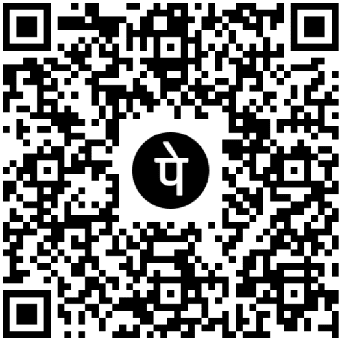Read more
When choosing a loan, one of the most crucial decisions you’ll face is whether to go with a fixed-rate or variable-rate loan. Each option has its benefits and drawbacks, and the right choice depends on your financial situation, goals, and risk tolerance. This article explores the key differences, advantages, and disadvantages of both types of loans to help you make an informed decision.
Understanding Fixed and Variable Rate Loans
Fixed-Rate Loans
A fixed-rate loan maintains the same interest rate throughout its term, offering consistent monthly payments. This stability makes it a popular choice for long-term borrowers who prefer predictable expenses.
Variable-Rate Loans
Variable-rate loans, also known as adjustable-rate loans, have interest rates that can fluctuate over time. The rate is typically tied to a market index, such as the prime rate, and may rise or fall depending on economic conditions.
Pros and Cons of Fixed-Rate Loans
Pros
- Predictability: With fixed-rate loans, your monthly payments remain consistent, making budgeting easier and reducing financial uncertainty.
- Protection from Rate Increases: You’re shielded from market interest rate hikes, ensuring your loan costs don’t unexpectedly rise.
- Long-Term Stability: Fixed-rate loans are ideal for long-term borrowing, particularly for mortgages and student loans, where stability is key.
Cons
- Higher Initial Rates: Fixed-rate loans often come with higher interest rates than variable-rate options, especially during periods of low market rates.
- Limited Savings in a Low-Rate Environment: If interest rates drop, you won’t benefit from reduced payments, unlike with variable-rate loans.
- Less Flexibility: Fixed-rate loans may not offer as much flexibility to refinance or adjust terms without incurring fees.
Pros and Cons of Variable-Rate Loans
Pros
- Lower Initial Rates: Variable-rate loans often start with lower interest rates compared to fixed-rate loans, making them appealing for short-term borrowing or when rates are low.
- Potential for Lower Costs: If interest rates decrease, your monthly payments could go down, leading to potential savings.
- Short-Term Advantage: Borrowers planning to pay off their loans quickly may benefit from the lower initial rates of variable-rate loans.
Cons
- Uncertainty: The primary downside of variable-rate loans is their unpredictability. Payments can increase significantly if interest rates rise.
- Financial Risk: Rising rates can lead to higher monthly payments, potentially straining your budget.
- Complexity: Understanding how rate adjustments work and predicting future trends requires effort and financial literacy.
Pros and Cons of Variable-Rate Loans
Pros
- Lower Initial Rates: Variable-rate loans often start with lower interest rates compared to fixed-rate loans, making them appealing for short-term borrowing or when rates are low.
- Potential for Lower Costs: If interest rates decrease, your monthly payments could go down, leading to potential savings.
- Short-Term Advantage: Borrowers planning to pay off their loans quickly may benefit from the lower initial rates of variable-rate loans.
Cons
- Uncertainty: The primary downside of variable-rate loans is their unpredictability. Payments can increase significantly if interest rates rise
- Financial Risk: Rising rates can lead to higher monthly payments, potentially straining your budget.
- Complexity: Understanding how rate adjustments work and predicting future trends requires effort and financial literacy.
When to Choose a Fixed-Rate Loan
Fixed-rate loans are a better choice if:
- You plan to keep the loan for an extended period.
- You value stability and want predictable monthly payments.
- You are concerned about potential interest rate increases.
Examples include long-term mortgages, student loans, or personal loans where consistency is vital.
When to Choose a Variable-Rate Loan
Variable-rate loans are advantageous if:
- You expect to pay off the loan quickly, such as in a few years.
- You’re comfortable with some financial risk and can afford potential rate hikes.
- You anticipate that interest rates will remain stable or decrease.
Common scenarios include short-term loans, certain types of mortgages, or lines of credit for specific projects.
Key Considerations Before Deciding
- Loan Term: Consider how long you plan to hold the loan. Fixed rates are better for long-term commitments, while variable rates may suit short-term needs.
- Market Conditions: Evaluate current and projected interest rate trends. A rising rate environment favors fixed rates, while stable or declining rates make variable rates more appealing.
- Risk Tolerance: Assess your comfort level with potential payment fluctuations. If you prefer predictability, a fixed-rate loan is the safer choice.
- Financial Goals: Align your loan type with your overall financial strategy, whether it’s minimizing costs or ensuring stability.
Choosing between a fixed-rate and variable-rate loan is a significant financial decision that depends on your personal circumstances and market conditions. Fixed-rate loans provide stability and protection from rate hikes, making them ideal for risk-averse borrowers. On the other hand, variable-rate loans offer the potential for cost savings, especially in the short term or during periods of declining rates.
Evaluate your financial goals, risk tolerance, and market expectations before making a choice. By understanding the pros and cons of each option, you can select the loan type that best aligns with your needs and helps you achieve financial success.







0 Reviews